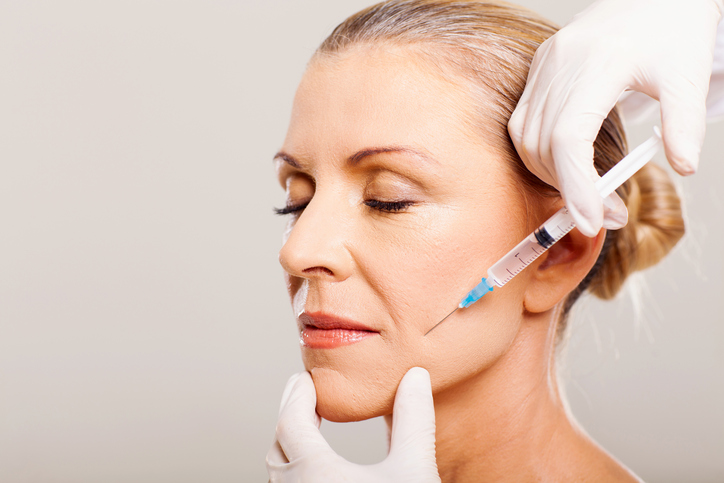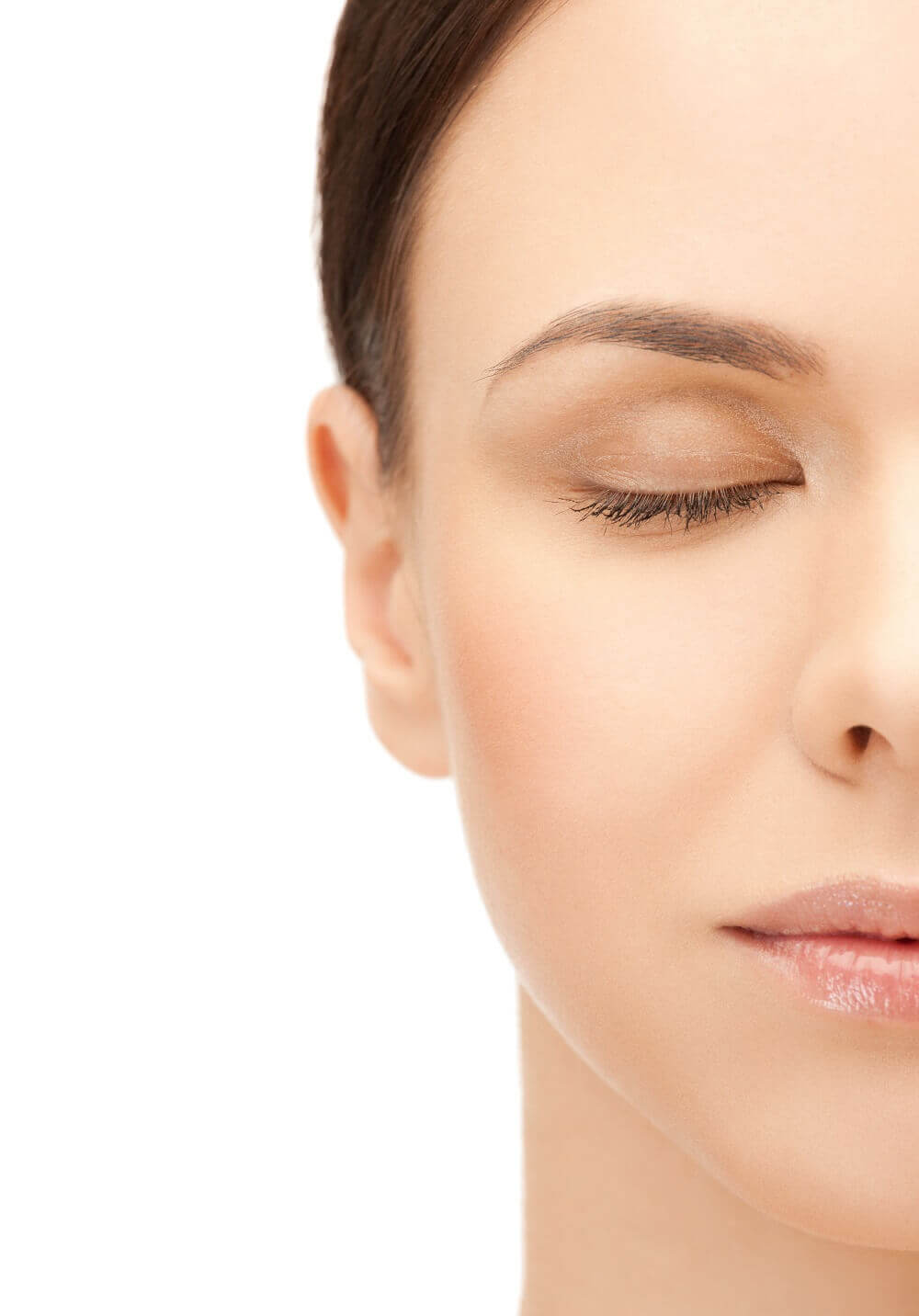Dermal & Soft Tissue Fillers from U.S. Dermatology Partners
What Are Dermal Fillers?
Loss of facial fullness and volume is one of the many age-related changes that people want to address with their dermatologist. From store-bought topical treatments to advanced dermatologic and surgical procedures, there are numerous cosmetic dermatology treatments available to help restore youthful volume. However, dermal and soft tissue fillers are often the most conservative and impactful solutions to restore volume without undergoing more invasive treatments. There are many different types of dermal and soft tissue fillers, and each one is formulated to address a specific area or issue related to volume loss. You can learn more on this page.
At U.S. Dermatology Partners we offer premier dermatology services for patients of all ages. Book your appointment today to find the best facial filler treatment for you and your skin, using our simple, online scheduling request form.

The procedure for dermal fillers can usually be done in less than an hour.
Find This Service Near You
What Are the Different Types of Dermal Fillers?
Dermal and soft tissue fillers (also known by a variety of brand names) include a range of products that are injected into the skin to replace lost volume, enhance lips, reduce wrinkles and rejuvenate the skin overall. Many patients request dermal fillers by their specific brand names. Juvederm, Restylane, and Sculptra are some of the most requested options. However, each of the available brands typically has a specific formulation that makes it best suited for certain treatment goals. A dermatologist can help you find the best option for your unique situation. You can also learn a bit more about each of the brands offered by U.S. Dermatology Partners below.
Hyaluronic Acid Fillers
Hyaluronic acid (HA) fillers are some of the most popular dermal and soft tissue fillers available. HA, unlike some other filler ingredients, is actually a naturally occurring substance already found in the body. You’ll find HA in many moisturizers because it improves the skin’s ability to attract and retain water.
After receiving an HA filler, patients see an immediate boost in the fullness of skin and diminished visibility of fine lines, wrinkles, and facial folds or sagging. Additionally, the increased hydration offered by hyaluronic acid ensures the patient’s desired results will last for several months.
The U.S. Dermatology Partners team offers the following hyaluronic acid fillers (there may be other options available at specific locations):
- Belotero – This HA filler is recommended to address moderate to deep lines and wrinkles. In most cases, Belotero is recommended for moderate to severe facial wrinkles and folds in areas such as the nasolabial folds.
- Juvederm – This HA filler brand is actually a whole product line with numerous formulations to increase volume and reduce the visibility of fine lines and wrinkles on all areas of the face. Additionally, Juvederm has several products created specifically to enhance the lips.
- Restylane – This is another HA filler that has a full line of product options that can create dramatic results, depending on the look the patient desires. This includes products designed to replace lost fullness and volume in the face, cheeks, lips, and hands.
- Revance RHA Fillers – RHA stands for Resilient Hyaluronic Acid, and RHA Collection fillers were specifically formulated to treat dynamic fine lines, wrinkles, and facial folds.
Biostimulatory Fillers
Unlike hyaluronic acid and collagen fillers that are made from substances naturally found in the body, biostimulatory fillers are crafted from man-made ingredients. Many products we use every day utilize lab-made ingredients, so this is not necessarily a negative. The main difference between biostimulatory fillers and naturally-derived options is longevity. Results of biostimulatory filler treatments may last for one or more years when applied properly.
At U.S. Dermatology Partners, our dermatologists typically utilize Sculptra or Radiesse, but there are many other options available. Sculptra is recommended for nasolabial folds and it can improve even the deepest lines and wrinkles with long-lasting results often up to two years. Similarly, Radiesse is a calcium hydroxylapatite filler that offers results that can last up to two years. It can be used to treat fine lines and wrinkles in all areas, and it can provide such dramatic improvement that Radiesse may be a viable alternative to surgical intervention for some patients.
PMMA Fillers
PMMA (Polymethyl-methacrylate microspheres) is considered a semi-permanent filler and is most often used to treat medium-to-deep wrinkles, folds and furrows, particularly nasolabial folds. Bellafill is popular filler option of this type. Bellafill is comprised of PMMA microspheres with a collage carrier. It is a popular filler option because of its long-lasting results. Compared with other fillers that need to be refreshed every four to 12 months on average, Bellafill can last up to five years. Bellafill fillers offer an immediate increase in volume and fullness, and they boost the natural production of collagen and elastin for greater elasticity and supple fullness. Bellafill is often recommended to improve the appearance of acne scarring.
Who Is a Good Candidate for Dermal Fillers?

As with all cosmetic procedures, it is important to be realistic about what dermal fillers can accomplish and the results you want to achieve. Facial injections are very popular because they are less intrusive than other plastic surgery procedures, but the results may require more frequent refreshing. Your dermatologist can offer the best advice for how to achieve your desired results.
How Do Dermal Fillers Work?
Based on what you want to accomplish, your doctor will decide how much filler should be used and will inject it into the areas desired. The procedure is quick and can usually be done in less than an hour.
Are There Side Effects of Dermal Fillers?

There are also risks associated with dermal fillers being injected improperly or by people without the necessary training and qualifications. If the fillers are not injected properly, skin cells may die, but such cases are extremely rare. A more common risk is that facial injections may be given by an unqualified or inexperienced provider, which can lead to injections in the wrong places and serious issues like disfiguration. This is why it is crucial to discuss the treatment and your expectations with your dermatologist and ensure your injector has the experience and artistry to successfully perform the injections.
How Long Will Dermal Fillers Last?
Results vary depending on the type of filler used, the area of treatment, and your body’s individual reaction.
Hyaluronic acid fillers, like Juvederm, are the most temporary option and usually last from six to 12 months. Biostimulatory fillers will last up to two years. PMMA fillers can last up to five years Since some filler results can last several years, make sure you have discussed what you want to achieve with your dermatologist. You may want to try a hyaluronic acid filler first, and if you like the look, follow it up several months later with a biostimulatory filler or more permanent PMMA filler.
*Results may vary by individual



